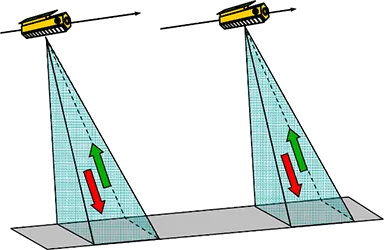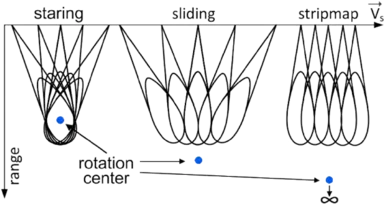JLo - The Joy of Long Baseline
Project Leader
Xiaoxiang Zhu, Michael Eineder
Contact Person
Xiaoxiang Zhu
Cooperation Partners
German Aerospace Center (DLR)
This project makes use of the special configurations of the TanDEM-X Science Phase for precise 3D point localization and coastline detection. A joint feature of the investigated applications is the exploitation of large spatial and temporal baselines, which are available in Pursuit Monostatic Mode (Figure 1) during the Science Phase. In this phase also the relatively new, high resolution Staring Spotlight Mode (Figure 2) will be available for the first time in a single-pass interferometric configuration. In particular, the following methods and prototypes will be developed and investigated:


PSI and TomoSAR with small data stacks:
Both Persistent Scatterer Interferometry (PSI) and SAR Tomography (TomoSAR) suffer from the fact that point heights, point movements, and atmospheric disturbances cannot be separated from each other straight-forwardly. Therefore, usually much more (very expensive) SAR acquisitions are necessary than really would be required. Thus, new PSI and TomoSAR procedures shall be developed, which allow to include TanDEM-X interferograms with sufficiently large baselines into the estimation process in order to reduce the need for additional acquisitions.
Generation of 3D ground control points:
The orbit segment used for the synthetic aperture of the Staring Spotlight Mode is so long that its curvature already leads to a certain blurring if the exact height of the illuminated object is not known to the processor. Recently, this effect was used for the first time to estimate the height of a point scatterer to an accuracy of 10 – 20 m by autofocusing. By further exploitation of the phase of an interferometric Staring Spotlight image pair this height estimate could be improved to an accuracy of 1 – 2 m. Adding a stereo pair in a third step will enhance the accuracy even more. The goal of this sub-project is the development of a method for the generation of absolute 3D coordinates of distinct points from this kind of data.
New coherence estimation methods for coastline detection:
With the large temporal baselines as provided by the Pursuit Monostatic Phase water surfaces will decorrelate significantly, whereas land surfaces will still stay coherent. Therefore, such interferograms are better suited for the distinction of water and land than conventional TanDEM-X data. For high-resolution coherence estimation aiming at robust water body detection, so-called non-local filters shall be developed and adapted with respect to this particular task. A comparison of conventional box-car and non-local coherence estimates is shown below.
